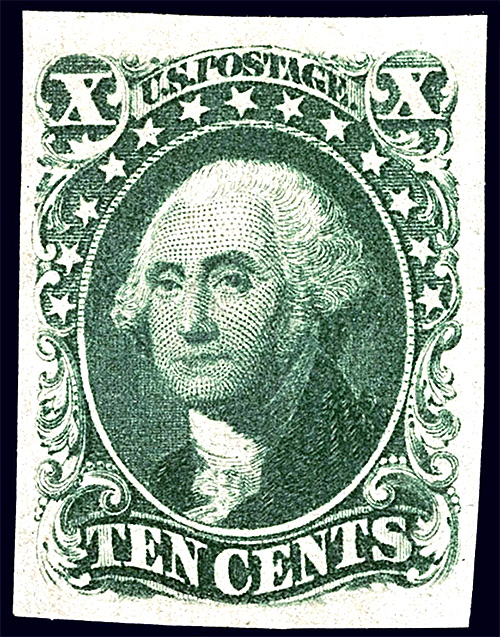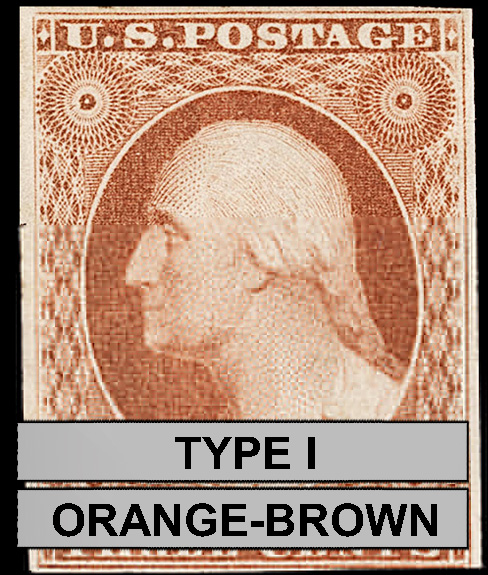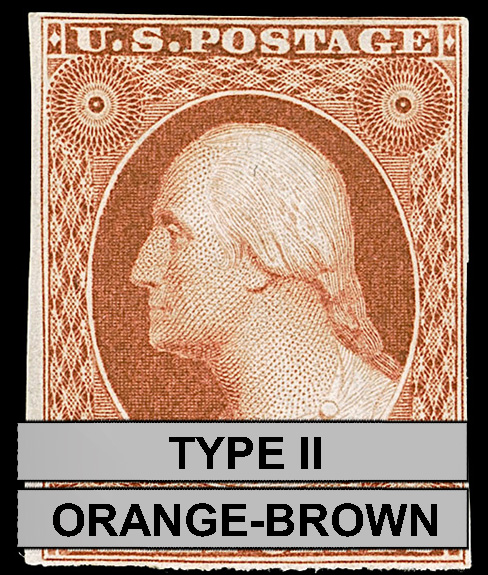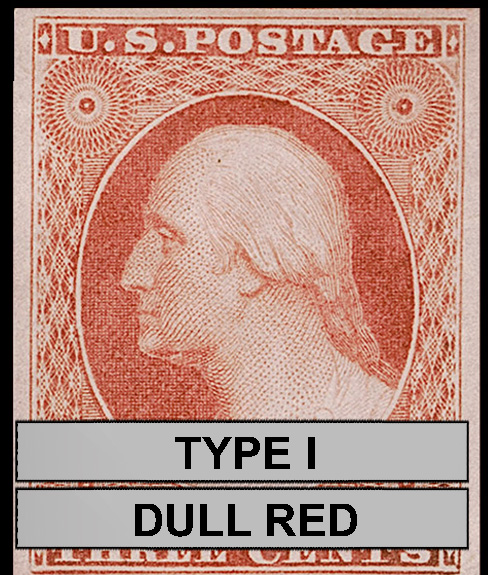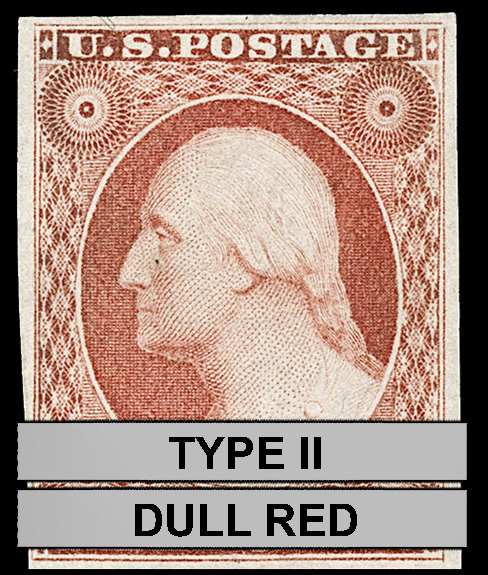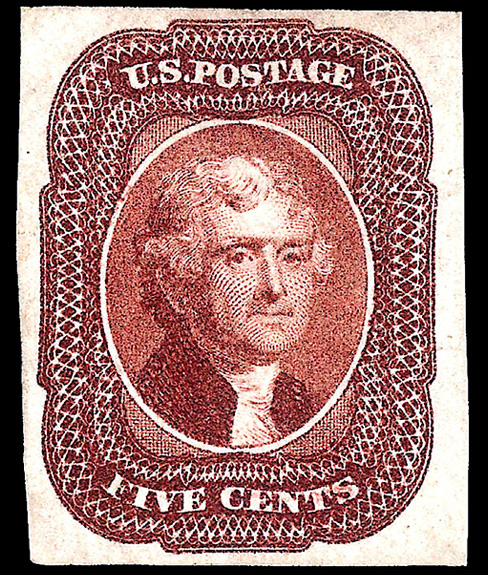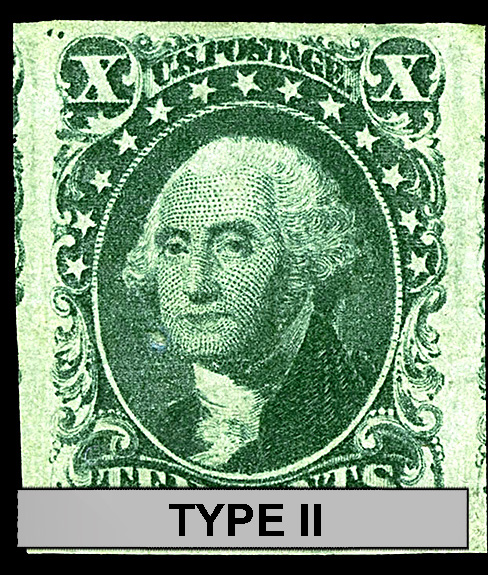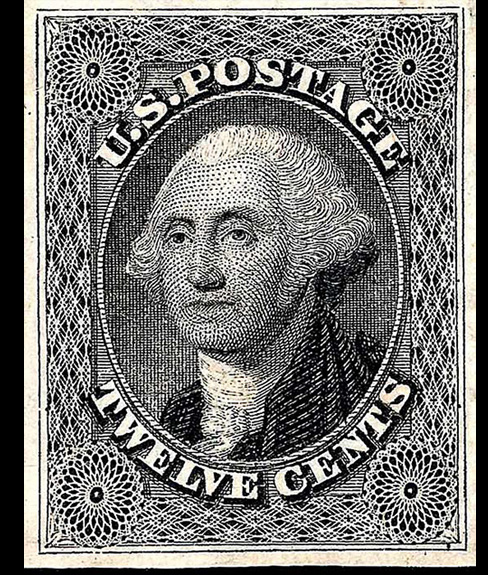Basic Info
10¢
Green, dark green or yellowish green
TYPE IV
Printing Method: Die-to-relief-to-plate transfer process
Plate: plate 1
Printer: Toppan, Carpenter, Casilier & Co.
Subject: George Washington
Number issued: 200,000
Perforations: Imperforate
Watermark: Unwatermarked
Scott #: 16
Issued: early May 1855
Value
CERTIFICATE REQUIRED
Used
$750 - $2,400 (four margins)
No postmark with gum (MH)
$15,000 - $27,000 (four margins)
Full perfect gum, no postmark
no trace of stamp hinge mark (MNH)
No sales recorded
ID #16
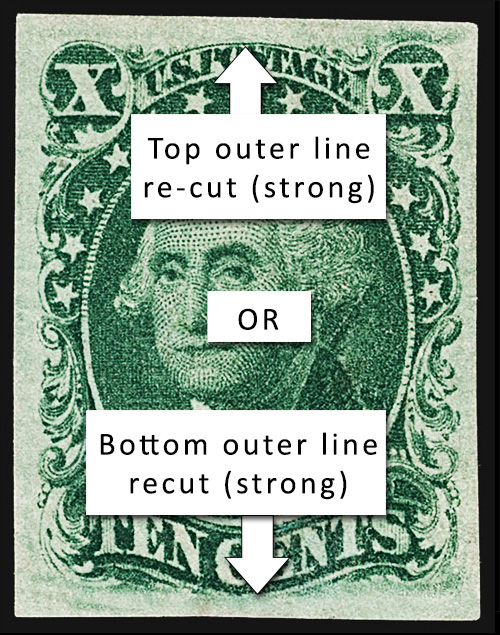
Inspiration for the Design
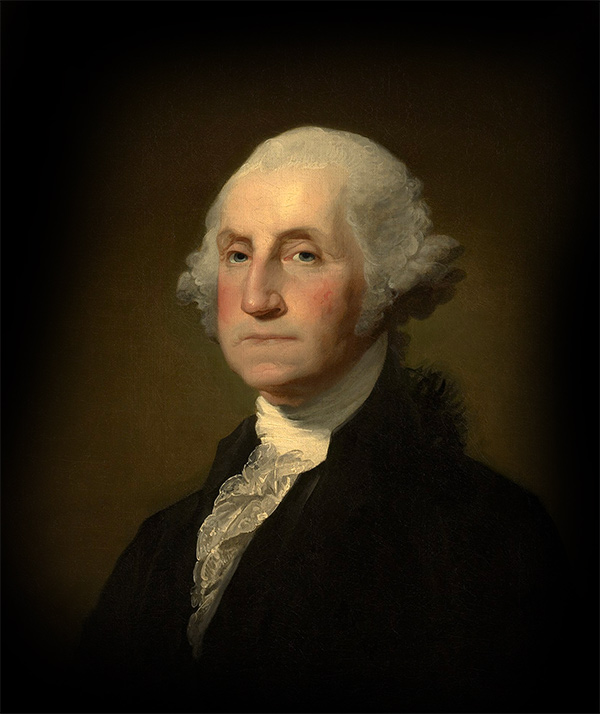
George Washington
Gilbert Stuart, 1803
Source image for the design of the vignette
The Imprint

Along the side margin of the sheet can be found the Printers imprint along with the plate number
Usage
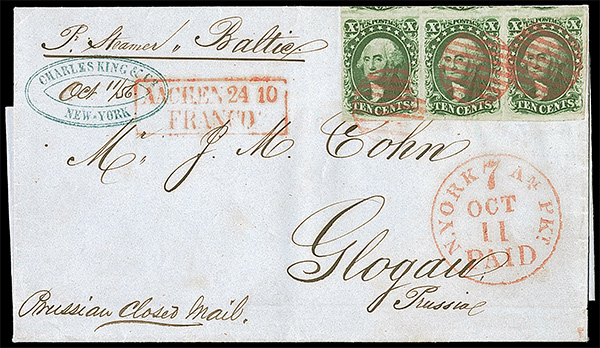
Two #15's followed by a #16 (Position 86L) in strip of three on a cover to Prussia
The Letter Rate for distances greater than 3,000 and under ½ oz was 10¢, the domestic rate for letters over ½ oz. Because of this the 10¢ stamp was relatively common. Not only used for foreign mail, it was used for coast to coast mail when the rate for the latter was raised from 6¢ to 10¢ in 1855.
Plate Positions
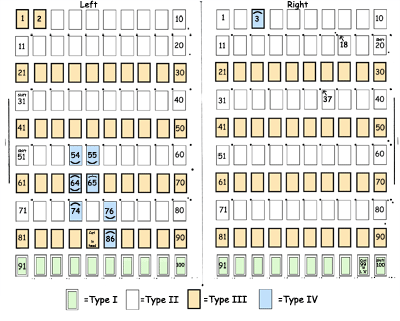
The plate positions of Plate 1, the blue spaces are #16's
For a larger copy click here (opens a new page)
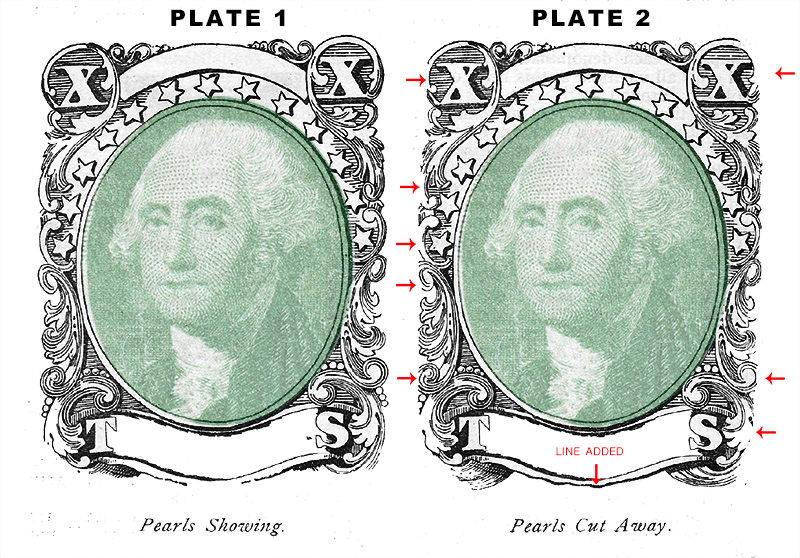
#16 comes exclusively from plate #1. In plate one there is a break in the bottom line of the value label and the pearl at the right and left edges care complete.
The stamps come in a wide spectrum of greens, ranging from light green to dark green. The darker the shade of green, the more desirable. Plate 2 stamps have not breaks in the bottom line and the pearls at the sides are shaved.
The 10¢ value was printed with wider spaces between the stamps than the 1¢, 3¢ and 5¢ values, consequently copies with less than four margins are sold at a discount.
Fakes
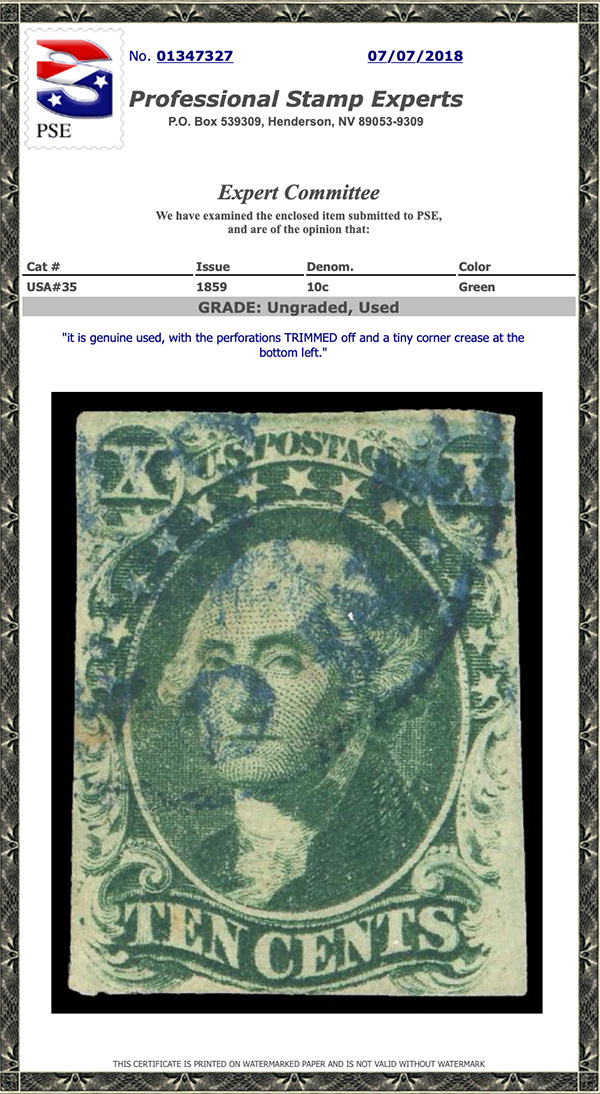
It is worth looking out for an all too common bit of fakery. Above a 1857 issue (almost always the cheapest #35) has had all its perforations trimmed off to imitate a imperforate 1851 10¢ issue. The clue in this case is that it is a type V stamp and there was no type V in 1851.
Essays and Proofs

